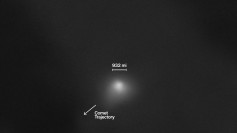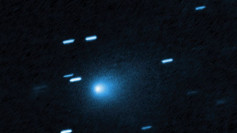A mysterious, primordial particle from the dawn of time has been discovered by physicists at the world's largest atom smasher.
Approximately 100 of the short-lived "X" particles, so named due to their unknown structures, were observed for the first time among trillions of other particles inside the Large Hadron Collider (LHC), the world's largest particle accelerator, located near Geneva at CERN (the European Organization for Nuclear Research).
These X particles were discovered in a swirling stew of elementary particles known as a quark-gluon plasma, which was created in the LHC by smashing lead ions together. Scientists want to develop the most precise picture of the universe's origins by examining the primordial X particles in more depth.
In a 2003 experiment, X particles were identified, but they disintegrated too quickly to be studied in detail. The new discovery is the first time they've been captured inside quark-gluon plasma, allowing scientists to zero in on some of the features that have eluded description thus far.
The discovery of X particles in quark-gluon plasma "is very difficult and new!" Yen-Jie Lee, lead author of the new study, said.
"First of all, quark-gluon plasma produces tens of thousands of particles," he noted, which is orders of magnitude more than the 2003 experiment recorded by the Belle detector in Japan's KEKB facility, which produced decay signatures from a few X particles.
The very early Universe, just minutes after the Big Bang, was not formed of the same things we see floating around today. Instead, it was filled with plasma superheated to trillions of degrees, composed of elementary particles called quarks and gluons, for a few millionths of a second. This is a quark-gluon plasma.
The plasma cooled in less time than it takes to blink, and the particles merged to form the protons and neutrons that make up the normal matter today. However, in that tiny blink of time, the particles in the quark-gluon plasma interacted, stuck together, and then dispersed in various configurations.
One of those configurations has a particle that is so mysterious that we have no idea how it is put together. This is the X particle, which has only been encountered in particle colliders very seldom and briefly - too briefly to be investigated.
The data now available are insufficient to learn more about the structure of the X-particle, but the discovery may get us closer. Finding the X-particle's signature in future data sets should be a lot easier now that we know how to identify it. As a result, the more data we have, the easier it will be to understand it.
The research has been published in Physical Review Letters.





